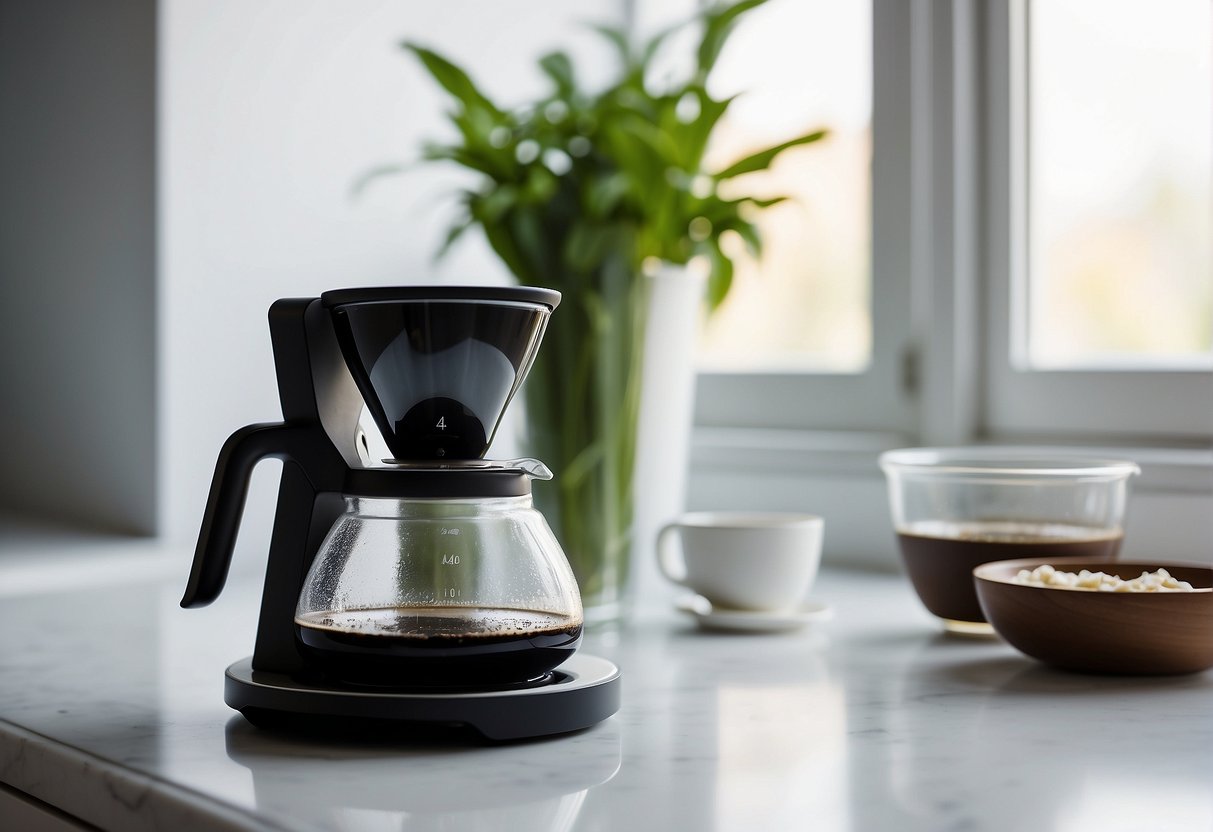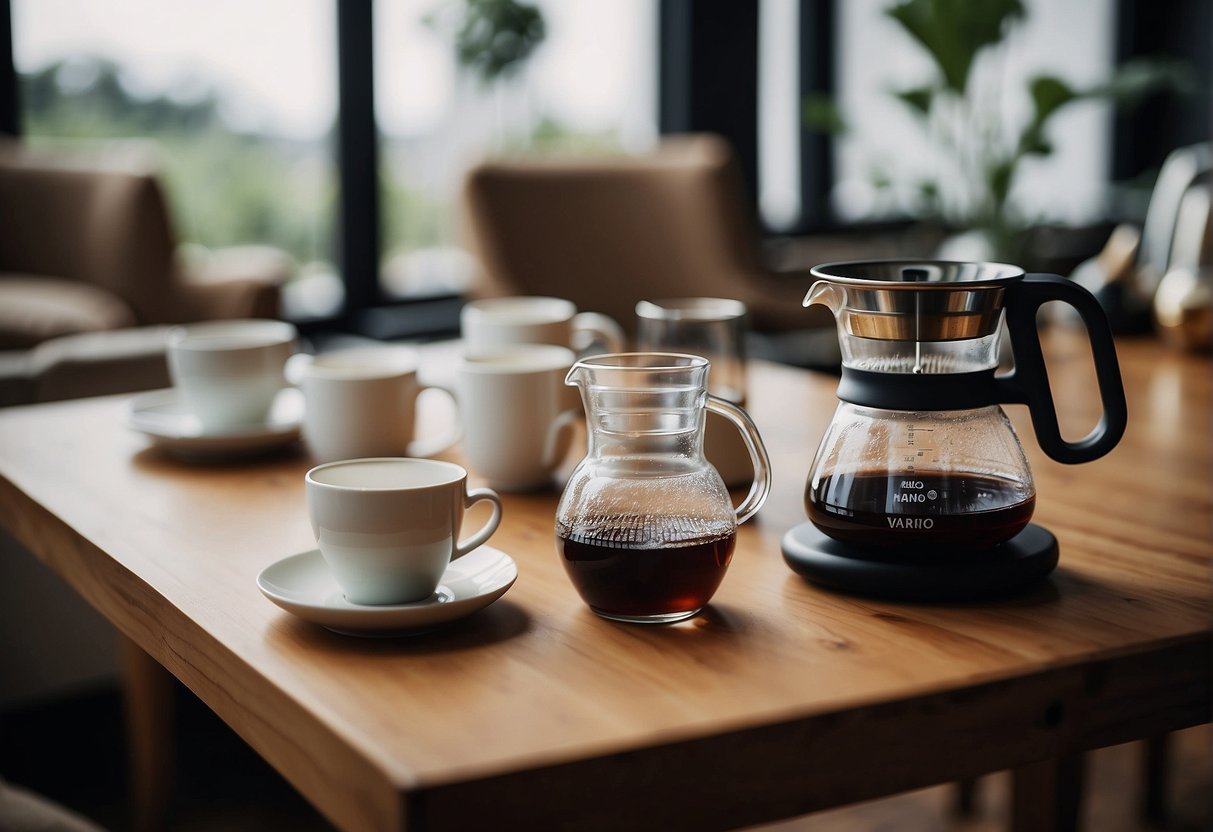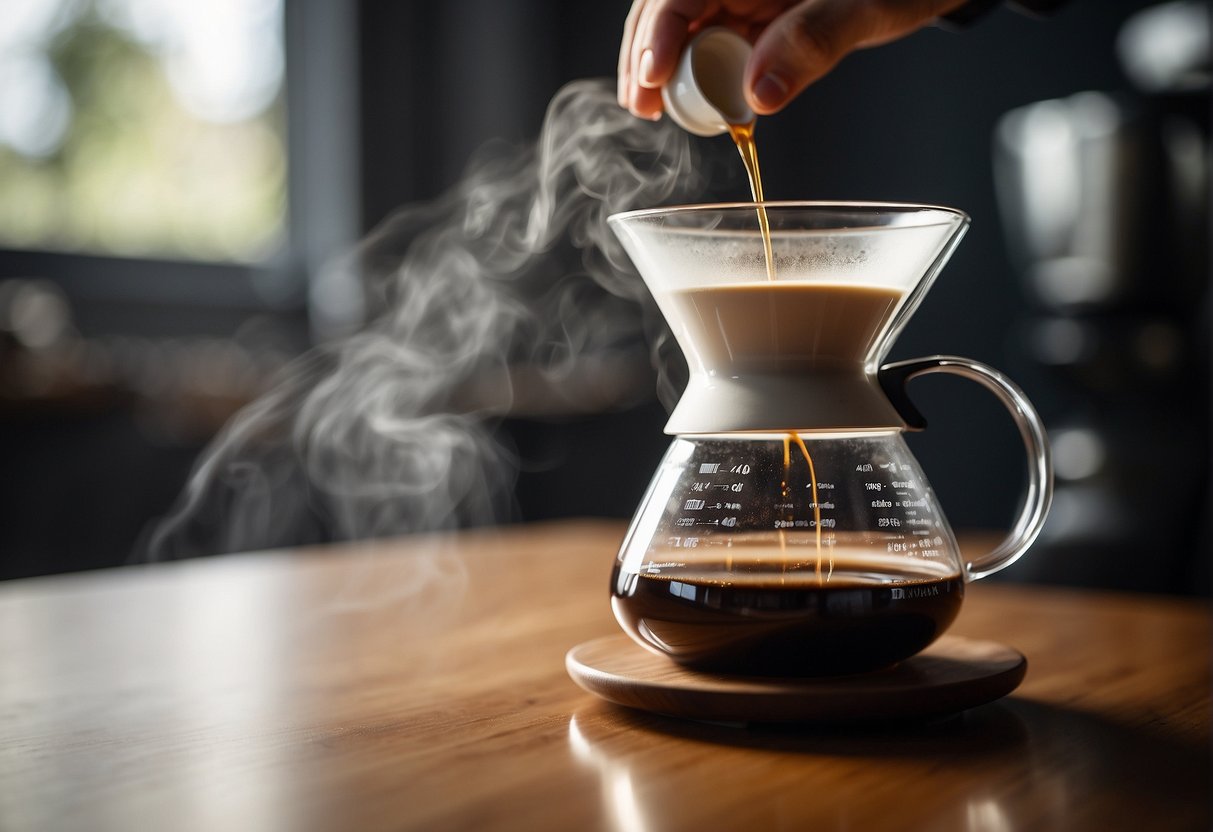The Hario V60 is a hallmark of modern manual coffee brewing. Revered by coffee enthusiasts worldwide, this brewing device stands out for its distinctive conical shape and spiral ridges, which facilitate a uniform extraction of flavor from the coffee grounds. Available in various materials, each version of the V60 aims to offer a different brewing experience. Two popular materials are glass and ceramic, and each has its unique advantages that appeal to different preferences.

Glass Hario V60 drippers are praised for their aesthetic appeal. The transparency allows users to appreciate the coffee brewing process, and its non-porous nature prevents any retention of odors or flavors, ensuring a pure coffee experience every time. On the other hand, a ceramic Hario V60 provides excellent heat retention, which is crucial in the brewing process to maintain consistent temperature throughout. This material’s durability also means it can serve as a long-lasting addition to a coffee lover’s arsenal.
When choosing between a glass or a ceramic Hario V60, it boils down to the nuances of heat retention, durability, and personal taste in the visual experience of brewing. Some users prefer the thermal consistency that ceramic provides, while others value the clean and pure taste that comes with using a glass dripper. The decision is a testament to the user’s priority, whether it’s the flavor profile, the tactility of the brewing process, or the longevity and resilience of the equipment.
Overview of Hario V60 Materials

Choosing the right material for your Hario V60 can significantly affect your coffee brewing experience. Each material offers unique characteristics ranging from heat retention to durability and aesthetics, impacting the brewing process and the coffee’s final taste.
Characteristics of Plastic V60
The Hario V60 in plastic, often made from durable polypropylene (PP) or styrene-acrylonitrile (SAN), is lightweight and BPA-free. These plastic versions are ideal for travelers or campers due to their resilience against breakage.
Properties of Ceramic V60
Ceramic V60 drippers, typically made from porcelain, boast excellent heat retention due to their thermal mass. The Hario V60 ceramic model maintains temperature stability, which is crucial during the brewing process for extracting flavors.
Attributes of Glass V60
Glass V60 drippers often utilize borosilicate glass, known for being heatproof. The clear glass allows visual enjoyment of the
Brewing Techniques and Methods
https://www.youtube.com/watch?v=LRr0y8mCC_M&embed=true
In the world of pour-over coffee, the Hario V60 stands out for its design and material options, each affecting the brewing process in nuanced ways that can alter the taste and quality of the brew.
Understanding Different Brewing Methods
Pour-over coffee, specifically using a Hario V60, involves a precise pouring technique that has a significant impact on the extraction process. The method requires a steady, circular pour that begins in the center and spirals outwards, ensuring even saturation of the coffee grounds. Whether using a glass or ceramic V60, the brewer needs to maintain a consistent flow rate to achieve a balanced extraction.
Effect of Material on Extraction Process
The material of the V60 affects heat retention during brewing which, in turn, impacts extraction. Ceramic, being more porous, has excellent heat retention properties, ideal for maintaining stable brewing temperatures throughout the process. On the other hand, glass V60s are less porous and may lose heat more quickly, but they do not retain any flavors from previous brews, ensuring a pure taste in each cup.
Filter Choices and Their Impact
The choice of filter plays a pivotal role in flavor profile and clarity. With Hario V60, the use of paper filters is common, contributing to a cleaner cup and highlighting intricate flavor notes by trapping oils and fine sediments. It is crucial to preheat the filter and V60 to avoid temperature drops during brewing, which can affect the slurry temperature and ultimately, the taste of the pour-over coffee.
Heat Management During Brewing
Effective heat management is critical for optimal extraction and flavor. Preheating the V60 is a step often recommended, whether using ceramic or glass, to ensure the slurry remains at the optimal temperature range. While ceramic is better at retaining heat, glass may require more attention to maintain the desired heat level due to its properties, suggesting that brewing temperatures and the preheat stage are essential components of the pour-over method.
Exploring Flavor Profiles and Coffee Quality

When it comes to brewing with the Hario V60, the choice of material—glass or ceramic—can impact the flavor profile and overall quality of the coffee. There are tangible differences in how each material retains heat and interacts with coffee grounds, influencing the taste of the final brew.
Influence of Material on Taste
Materials have distinct thermal properties that affect coffee extraction. Ceramic drippers are known for their heat retention, which provides a stable temperature throughout the brewing process–a contributor to a consistent and fuller flavor. Conversely, glass drippers might cool down more quickly, potentially leading to a brighter and more delicate taste. These differences can accentuate certain notes in the coffees, making the material choice a critical aspect of the coffee brewing experience.
Experimenting with Coffee Grounds and Grind Size
Experimentation is key in brewing with a V60 dripper. Utilizing different types of coffee grounds and adjusting the grind size can lead to a multitude of flavor outcomes. For example, a coarser grind might result in under-extraction in a ceramic V60 due to its heat retention qualities, while it may be perfectly suitable for a glass V60, which loses heat at a swifter pace. Each coffee variety responds differently to these variables, so breweries often conduct experiments with multiple brews to fine-tune the grind size and brewing time that best suit the selected coffees and dripper material, achieving the desired taste and richness.
Choosing the Right Hario V60 for Your Needs
Selecting the appropriate Hario V60 for one’s brewing experience depends on factors such as material durability and design appeal. Preferring either ceramic or glass options involves understanding their intricate differences, mainly revolving around weight and portability, which are crucial for usage at home or while traveling.
Analyzing Weight and Portability
Ceramic V60: Noted for heat retention, the ceramic version tends to hold temperature steady, aiding in a consistent brew. However, it is heavier and thus less suitable for travel. Their weight is a consideration for those who enjoy a leisurely morning cup at home rather than on the go.
- Weight: Substantial; less prone to shifting
- Portability: Low; best for stationary use
Glass V60: The glass version stands out for aesthetics, allowing coffee enthusiasts to watch the brewing process. It is lighter than ceramic but still can be fragile, making it less ideal for travel but a fine choice for careful home use.
- Weight: Moderate; requires careful handling
- Portability: Moderate; not recommended for outdoor activities
Plastic Dripper: Hario also offers a plastic dripper, which is lightweight and surprisingly durable, ideal for travelers and outdoor enthusiasts who prioritize portability over all else.
- Weight: Light; easy to pack and carry
- Portability: High; excellent for camping and travel
Metal V60: Additionally, Hario provides options in metal, which combines a lightweight profile with increased durability compared to glass or ceramic. Depending on the metal, it can also provide superior heat retention, suitable for both home enjoyment and travel adventures.
- Weight: Varies by metal; generally lighter than ceramic
- Portability: High; resilient for travel and outdoor brewing
Comparative Evaluation: Glass Vs. Ceramic V60
In determining the ideal V60 for coffee enthusiasts, one must consider the material’s thermal characteristics, durability, design appeal, and value for money. The Hario V60, a beloved tool for pour-over coffee aficionados, comes in various materials, each with its unique impact on the brewing process.
Thermal Properties and Their Effects on Coffee
Glass V60s are known for their moderate thermal mass, which allows for reasonable heat retention during the brewing process. This can lead to a more consistent brew temperature, possibly resulting in a more balanced extraction of flavor. On the other hand, ceramic V60s typically possess a higher thermal mass, which may enhance heat retention even further, though they typically require preheating to achieve optimal brewing temperatures.
Assessing Longevity and Resistance to Breakage
Ceramic V60s boast a high level of durability and longevity if handled with care; however, they are inherently more fragile than glass. Despite this fragility, a well-maintained ceramic V60 can last for many years. Conversely, glass V60 drippers, while still relatively fragile, can crack or shatter upon impact, yet they can resist minor temperature shocks better than one might assume.
Contemplating Design and Visual Appeal
The appearance of the V60 greatly influences a buyer’s choice. Glass V60s offer an aesthetic appeal with their clear material, allowing the user to view the coffee as it brews. Ceramic options are often favored for their classic look and come in a variety of colors, including black and limited editions like olive wood, adding to the aesthetic value.
Price Consideration and Value for Money
Cost is an essential factor when choosing between glass and ceramic V60s. Glass models tend to be more affordable and suitable for those on a budget, without significantly compromising on quality. Ceramic V60s, while generally priced higher, offer excellent value for those who prioritize heat maintenance and an elegant design.
Accessories and Additional Equipment
When brewing with a Hario V60, be it glass or ceramic, additional equipment can enhance the experience and outcome. Equipments such as kettles play a pivotal role in achieving the perfect pour-over.
Selecting Compatible Kettles
A kettle is an indispensable accessory for any V60 setup. Choosing a kettle with a long, slender spout ensures precise control over the pour, which is crucial for optimal extraction. For the Hario V60 sizes 01, 02, and 03, compatibility with the kettle isn’t an issue of size but rather one of pour rate and temperature stability.
- Gooseneck Kettles: These kettles are preferred for their precise pour.
- Electric vs. Stovetop: Electric kettles often come with temperature control, while stovetop kettles provide a traditional approach.
- Material Considerations: Stainless steel kettles complement the durability of ceramic and glass drippers alike.
The choice of kettle should align with the user’s desired control level and whether they prioritize convenience or tradition. No matter the coffee maker type chosen, the right kettle will be a conducive companion in brewing a gratifying mug of coffee.
